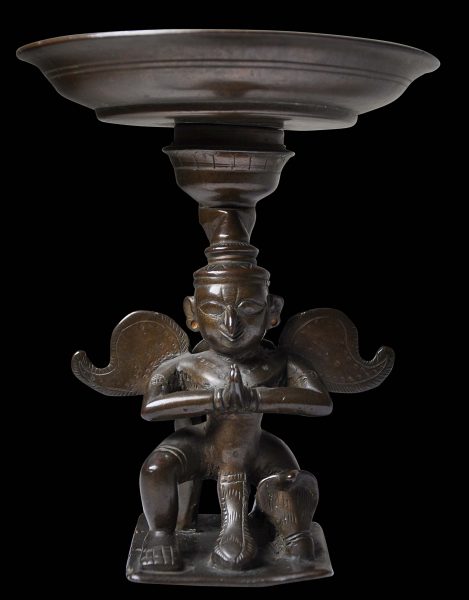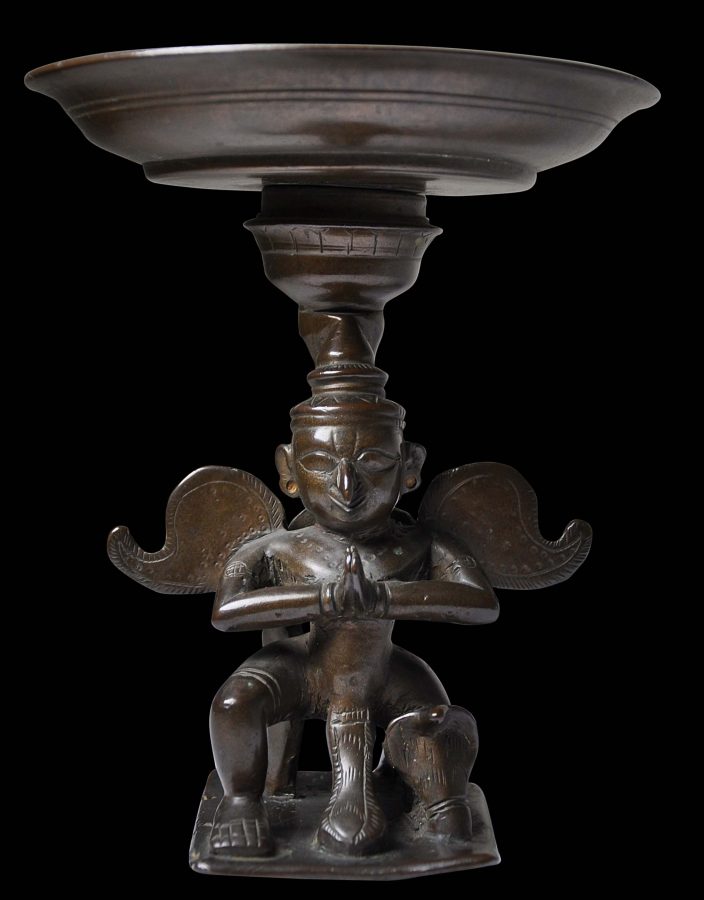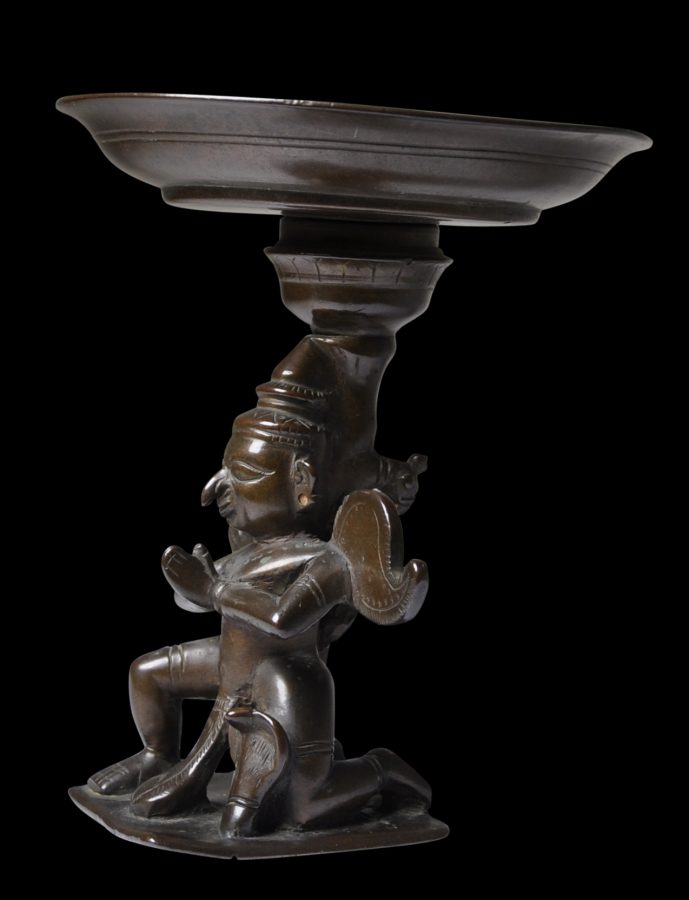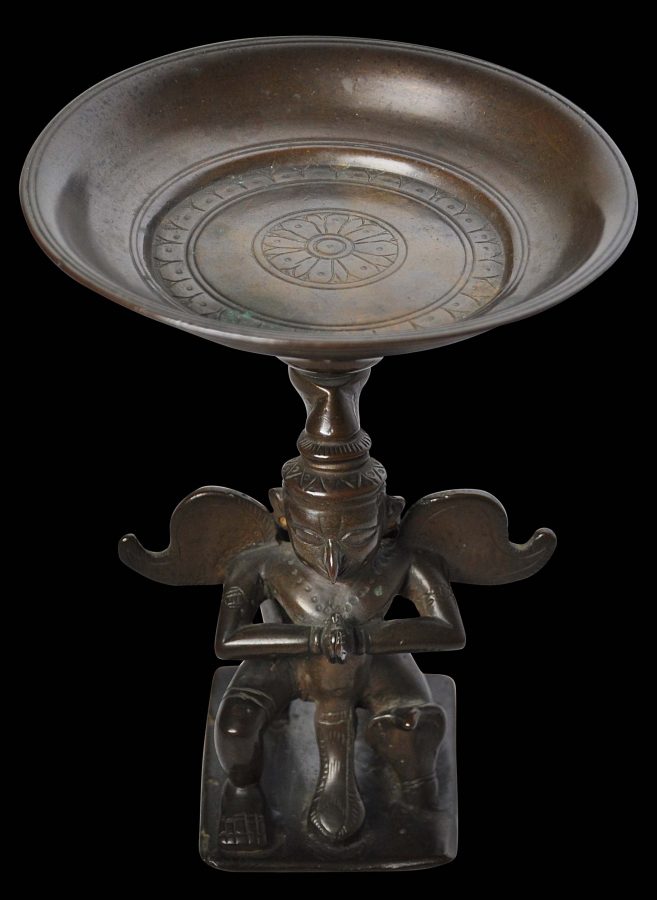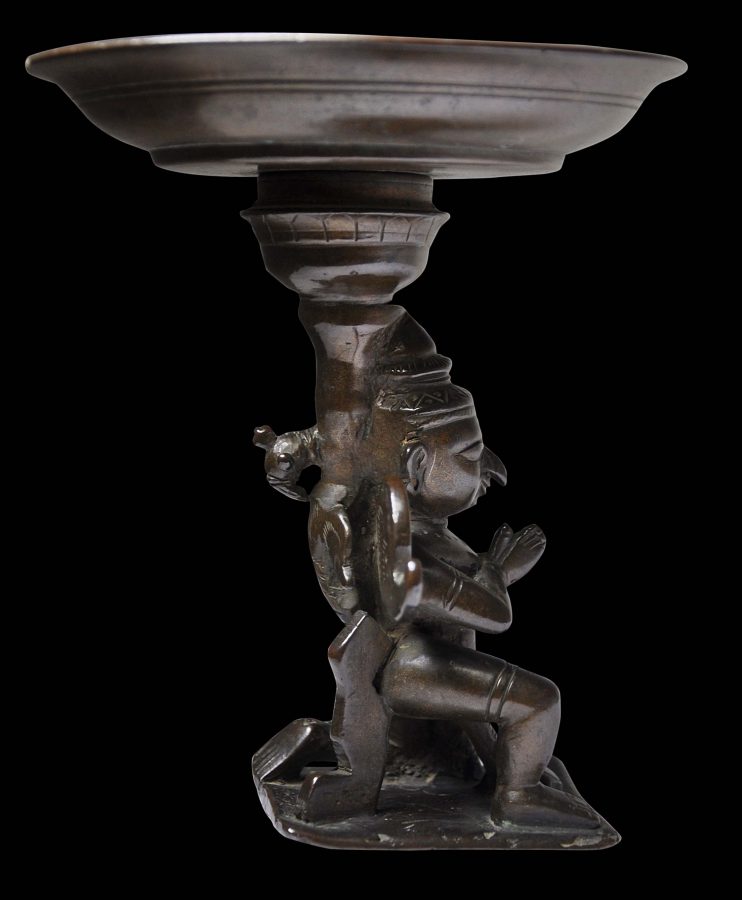This lamp stand is of bronze or brass that has developed a superb, chocolate-brown patina. It comprises a figure of Garuda, with prominent, flared wings, kneeling on one knee and with hands clasped in anjali mudra. A cobra with its hood open is at Garuda’s left knee. The nose of Garuda has been portrayed as a beak.
A parrot is cast to the deity’s back and from this rises a stem which opens to a lotus bud. The bowl of the lamp screws into this. The interior of the bowl is engraved with a central lotus flower and an outer rim of petals.
This form of Garuda beneath a lamp is typical of Himachal Pradesh, in India’s north. Related examples are illustrated in Postel et al (1984, figs 275-280). Pal (2003, p. 59) illustrates an example in the Norton Simon Museum of similar form and size, which is inscribed with a date that is equivalent to 1521. This suggests that our example might be even earlier than the 17th-18th century dating that we have ascribed to it.
Overall, this is a fine and pleasing sculpture in excellent condition and with a lovely, deep patina.
References
Pal, P., Art from the Indian Subcontinent: Asian Art at the Norton Simon Museum, Yale University Press, 2003.
Postel, M., A. Neven & K. Mankodi, Antiquities of Himachal, Project for Indian Cultural Studies, Volume 1, Bombay, 1985.


